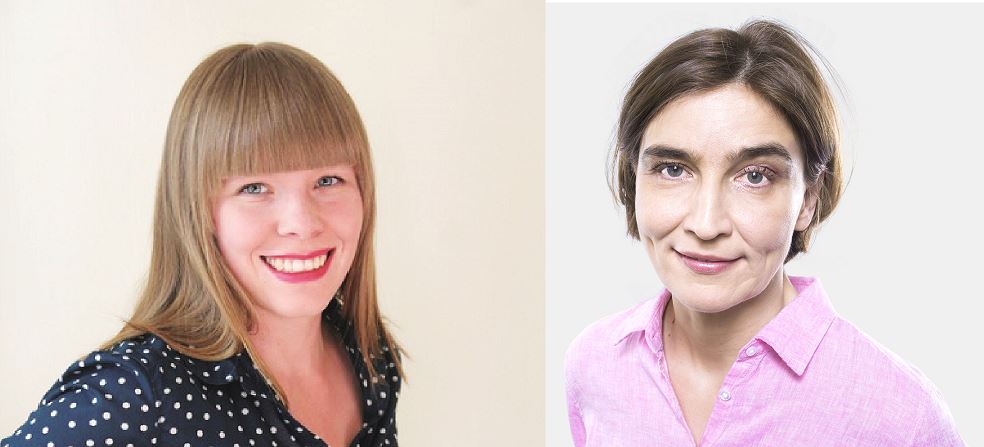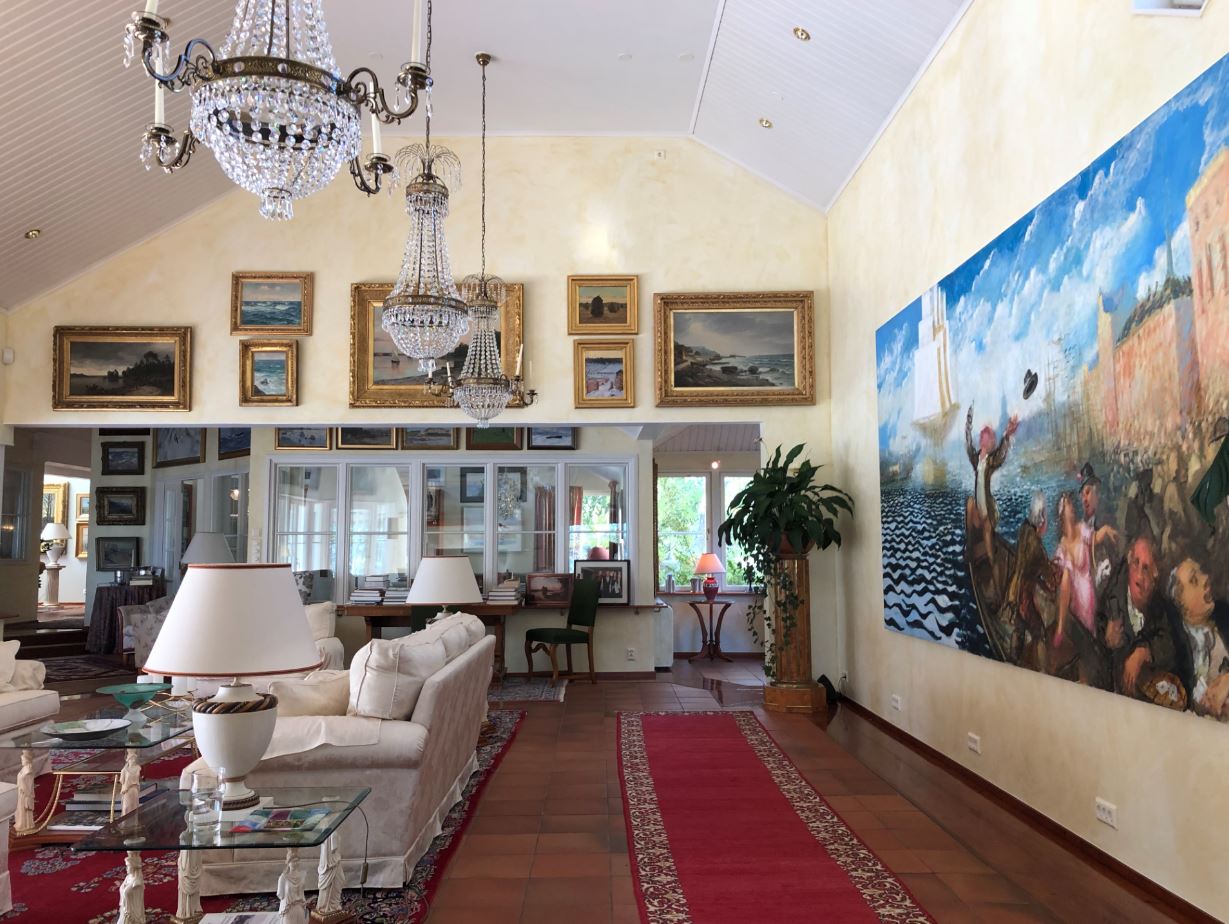A portrait of the richest of the rich in Finland
Who are the richest one in a thousand in Finland – the euro millionaires? How do they view themselves and other Finns? These issues are being explored in one of the most discussed books this autumn: Huipputuloiset – or something like The Top Earners in English.
Before publishing their book, social scientists Anu Kantola and Hanna Kuusela had presented a qualitative research report on the 5,000 richest Finns. This formed the basis for the book, which looks at the group that makes up one-thousandth of Finland’s population. The authors have also interviews 90 millionaires, concentrating on three categories: those with inherited wealth, top leaders and businesspeople.
The researchers wanted to know what the rich think about society. Has globalisation changed them and created new identities and cultures, freeing them from Finnish society? This is also important for politicians; do Finnish investors stay in Finland, and what can tempt them to stay?

Hanna Kuusela and Anu Kantola. Photo: Vastapaino
Most millionaires work hard, and they might offer ordinary ground coffee in paper cups, the authors write. Many of the rich do not want their wealth to show. In typical Finnish fashion, they make a point out of living like ordinary Finns and they work hard.
Small differences, but the rich are gaining a lead
The income gap is still narrow in Finland both compared to the rest of the Nordics and internationally. But since the 1990s the richest people have been gaining a lead. According to Forbes magazine, there was only one dollar billionaire in Finland in 2010. In 2017 there were seven. Together, they own as much as the 40 % of Finns at the bottom of the wealth scale.
The researchers say the rich usually exude optimism and positivity. But the rich are less positive and hopeful when talking about Finland’s future. The world’s happiest country, topping many statistics, is still a country where the richest are not happy. Many talk about leaving, because Finland has nothing to give.
Huge influence
The richest people are important to society, and are often found in top positions in business and politics. They have power over how companies are run, the flow of capital, where jobs are created or disappear. High-income earners wield influence through networks and by supporting lobbying firms, think tanks or election campaigns. They are also sometimes viewed as heroes and idols in their own right.
An example of their power is that nearly half – 46 % – of board members in the most important organisations representing employers, finance and business in recent years have come from the richest one per mille of the population.
At least four well-known national politicians were on the researchers’ list over Finland’s richest: the then Prime Minister Juha Sipilä and Minister of Transport and Communications Anne Berner, both from the Centre Party, as well as two MPs.
Globalisation important to Finland
The authors remind us of a time when the nation state was crucial for business. In Finland, trade with the Soviet Union was very important after the war debts had been repaid.
But the markets were gradually opened up. Both capital and Finns could move more freely. Foreign ownership became legal and increasingly common in Finland. A new breed of rich people with their own ownership culture, identity and business models emerged. Some business leaders became charismatic stars with salaries that rose in step with more limitless bonus systems. From this grew the notion that unique skill were needed, as well as heroic acts, top health, the ability to innovate and the courage to make brave and quick decisions.
Finnish envy
When CEOs compare salaries, it is not with those who are paid less at home in Finland, but globally. One of the top leaders interviewed still wondered whether it was right that he was paid more than the Prime Minister.
It might not be right. But on the other hand, in internationally listed companies the international salary level is what you compare yourself with.
 Anders Wiklöf is proud of his art collection, but many millionaires struggle to see what sets them apart from ordinary Finns.
Anders Wiklöf is proud of his art collection, but many millionaires struggle to see what sets them apart from ordinary Finns.
Only a small minority of the 90 millionaires interviewed seem genuinely proud and would brag about their wealth. Most are timid, do not lead an exuberant lifestyle and cannot think of anything that sets them apart from other ordinary Finns – perhaps only the fact that they can afford the food they fancy. The Finnish work ethics is alive and well with the older millionaires.
“We are not lifting ourselves into heaven”
Some describe themselves as totally ordinary people, even humble, with the slogan “we are not lifting ourselves into heaven”.
An heir said not even his wife knew the size of his wealth. Somewhat shyly, he told the interviewer of her surprise when the issue came up. She had been worrying about the family finances, and about what she dared suggest buying for their home.
Inherited money should be made to grow
The authors note that many of the interviewees consider their inheritance and profits from family businesses to be a loan, which should be passed on to the next generation. The family business should ideally be left in a better state and the inheritance should be a bit larger than what you inherited yourself, since the family also grows.
The professional directors who were interviewed focused closely on both salaries and the envy directed at their economic privileges. Envy is said to be an important Finnish phenomenon which explains why leadership salaries and very high bonuses are frowned upon.
If you talk about envy, it is also easier to swipe aside opinions around growing wage gaps or the unfair distribution of wealth.
There is also a lack of knowledge. Common people do not know how much work or responsibility there is, nor the risks involved, the interviewees complained.
The authors note that conversations turned serious when they began talking about people in the lowest salary categories. People have got stuck there. Common views include “they do not take responsibility for themselves, cannot pull themselves up and get a job”.
“Social security nets an obstacle”
The authors note that top leaders are particularly focused on the lower salary groups, not the middle or working classes. Directors worry about those who exploit the social safety net and who live in depopulated areas.
They are lazy, lack initiative and morals, while the directors consider themselves to be active and hard-working as well as full of initiative. The saying “the world is your oyster” comes up repeatedly in the interviews.
Many seem to think Finland is a nanny state where Finns are used to others taking responsibility when the individual should take matters into their own hands. Young people in particular think the system should look after them.
Family backgrounds are indeed different. Personal skills like self-assuredness and energy varies, and for that you need support. But still: you have to be interested in your own future and progress, is an answer which is repeated in the survey.
Negative to social benefits
The directors are worried about people exploiting the system, those who just wait for the universal wage so that they can avoid working. The directors protest against a passive system which makes it more profitable to wait for social benefits than to go to work. The safety net only puts brakes on people’s initiative, they claim.
The American ideal of “self-made men” who rise from the bottom on their own thanks to hard work and clear goals is also admired in Finland. Much of the country's wealth has been created in that way, and the ideal remains. Small businesses and innovations are now part of the school curriculum, with Silicon Valley as a model.
Several of the interviewees are deeply disappointed in lacklustre politicians – and in democracy as a system where voters/citizens must be heard. It is clear that those who represent family businesses are used to very rapid decision-making processes. They hope instead for stronger leadership.
The trade unions, the tripartite conversation and the centralised wage negotiations are not popular among the interviewees either.
Taxes make people willing to move
When taxes come up in conversation, the talk about moving from Finland intensifies. Many know colleagues who have already moved to Sweden to avoid inheritance tax.
Tax avoidance and foreign bank accounts are obvious solutions to many. If the rich are chased out of the country, who would pay the taxes then? As long as the EU has no unified taxation legislation, there are loopholes which are being used, several of the interviewees said. They still understand the state’s need to tax income to finance common costs, but still consider the limit to have been reached when it comes to themselves.
It might be a generational question, but the richest and oldest Finns love their home country and stay. The younger generation talks more aggressively and are described in the book as an irritating elite sat on the top.
The authors conclude that there is still a small group of top earners who gladly pay their taxes in order to maintain society, and who worry about issues like Finland’s youth unemployment.
Despite the fact that a large majority among the interviewees have unlimited opportunities due to their wealth, they still feel hindered by an irritating state, irritating permission processes, an irritating trade union movement and irritating taxes. There is also an irritating sense of envy among the other citizens, summed up Anu Kantola and Hanna Kuusela.
- What sets the richest one in a thousand apart…
-

…from the man and woman in the street?
This is what researchers Anu Kantola and Hanna Kuusela try to answer in their book Huipputuloiset (The Top Earners):
- 84 percent are men, half live in the capital region
- 16 percent have Swedish as their mother tongue (part of a total Swedish speaking population of five percent)
- They pay on average 34 percent in tax
- They are all millionaires, some even billionaires. The richest one per mille of Finns earn on average 684 444 euro a year.
90 out of the millionaires have agreed to be interviewed. This has been anonymous since most rich Finns do not want to brag about their wealth.
- Anders Wiklöf
-

is one of Finland's euro millionaires. He is one of those who gladly pays taxes, but serves sirloin steaks to his dog. He is a proud self-made man who started out selling cars. Today his is a major shareholder in Ålandsbanken, and has a new book out.
 Follow us on Facebook
Follow us on Facebook
